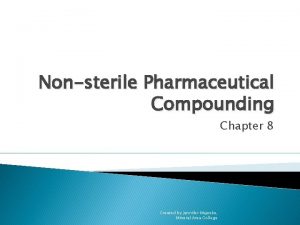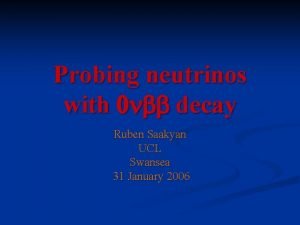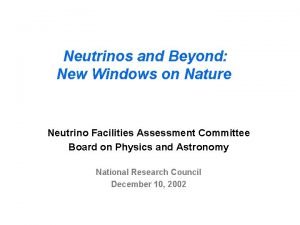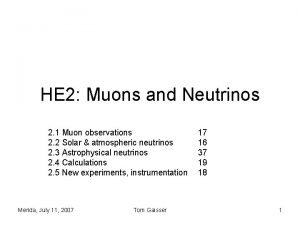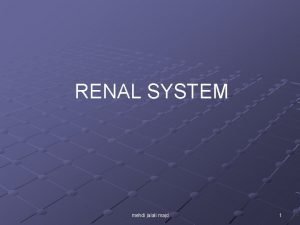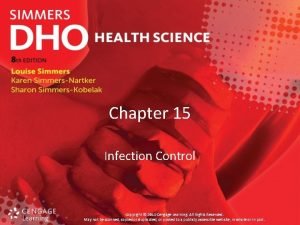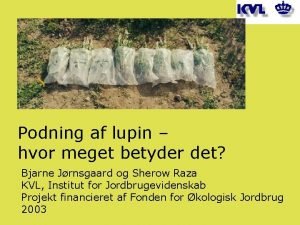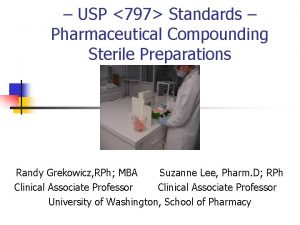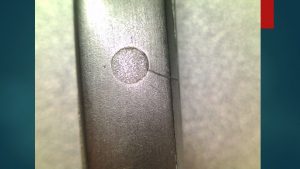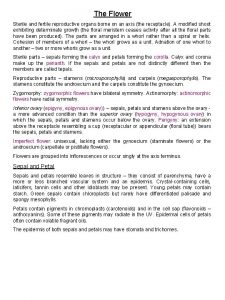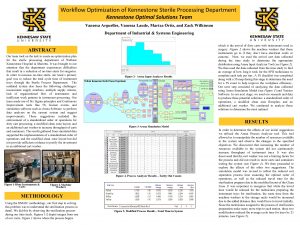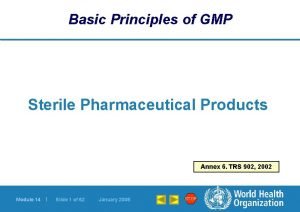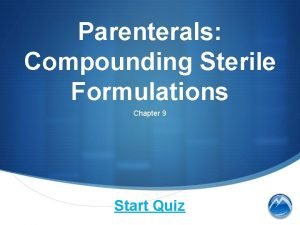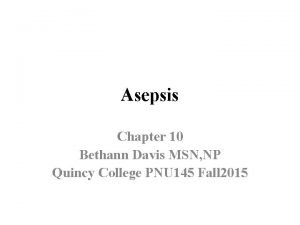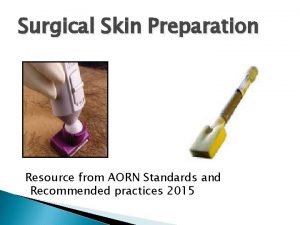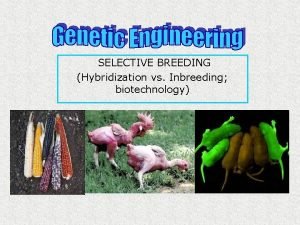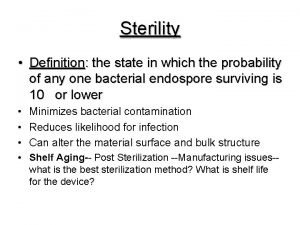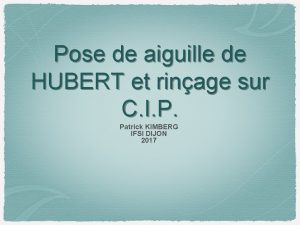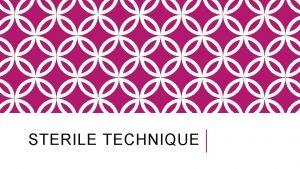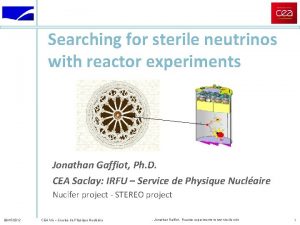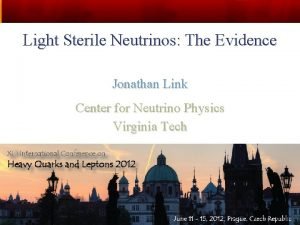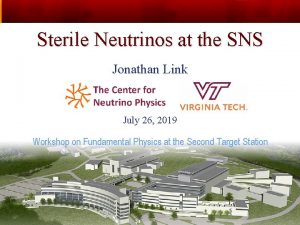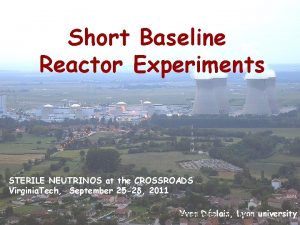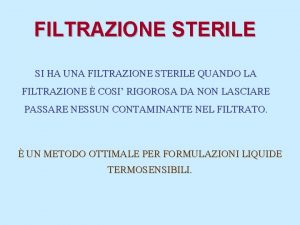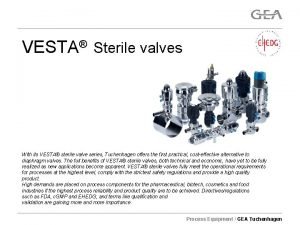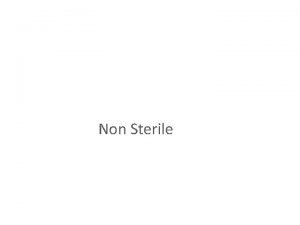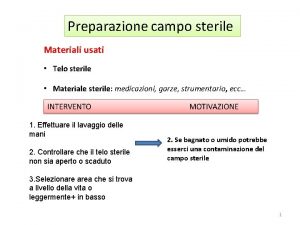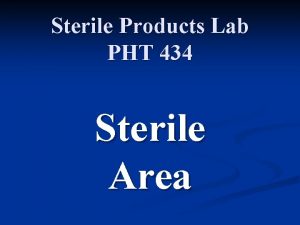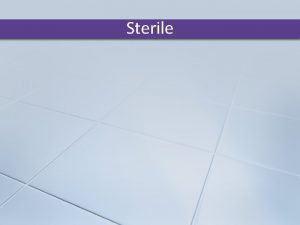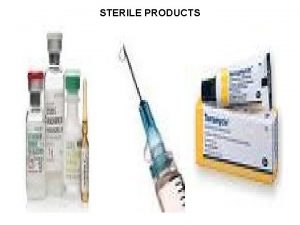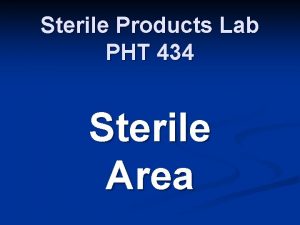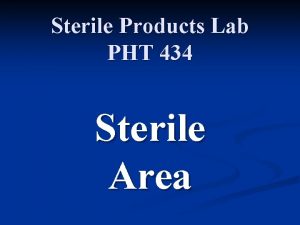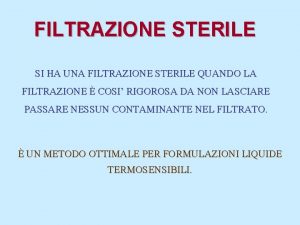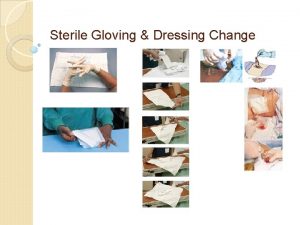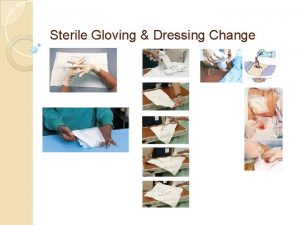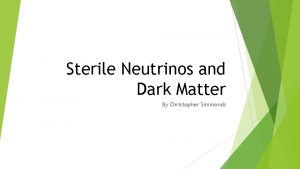51 Cr Source Experiments for Sterile Neutrinos Jonathan
























- Slides: 24

51 Cr Source Experiments for Sterile Neutrinos Jonathan Link Virginia Tech Sterile Neutrinos at the Crossroads 9/27/2011

Motivation: The LENS-Sterile Proposal 51 Cr By inserting a Mega-Curie 51 Cr source in the center of the LENS detector we could observe a full wavelength, or more, of large Δm 2 oscillations in a few meters. (See next talk by Raghavan)

Motivation: Gallex, Sage, 51 Cr and Sterile Neutrinos Giunti and Lavender noted that the low ratio of observed to expected ν +71 Ge interactions in the Gallex and Sage source experiments: R = 0. 88 ± 0. 05 may be due to sterile neutrino oscillations.

Electron Capture Neutrino Sources Electron capture isotopes decay to two bodies and as such produce a mono-energetic beam of neutrinos at low energies. 51 Cr + s-shell e- → 51 V + νe (+ X-ray) Sources such as this have played a critical role in the calibration of radiochemical experiments as a proxy source of solar neutrinos with a well known flux. Advances in detector technology have created new opportunities for groundbreaking neutrino physics using electron capture neutrino sources, including: Sterile neutrino oscillation searches (Grieb, JL & Raghavan 2006) Neutrino magnetic moment searches (Vogel & Engel 1989)

Electron Capture Neutrino Sources In 1973 Luis Alvarez proposed using a 65 Zn source to calibrate Ray Davis’ chlorine detector. Since then several such source have been proposed: Isotope τ½ Eν Max 65 Zn 244 d 1. 3 Me. V 51 Cr 27. 7 d 750 ke. V 152 Eu 13 y 1. 05 Me. V 37 Ar 34. 9 d 812 ke. V Production Mechanism Gammas Thermal neutron capture 770 & 345 ke. V (50%) Thermal neutron capture 320 ke. V (10%) Unknown 121 ke. V -1. 7 Me. V (100%) 40 37 Fast neutron Ca(n, α) Ar Internal Brem. only Notes Proposed by Alvarez Proposed by Raghavan, used by Gallex and SAGE Proposed by Cribier and Spiro Proposed by Haxton, used by SAGE

51 Cr as a Mono-Energetic Neutrino Source K shell capture L shell capture 90% of the time the capture goes directly to the ground state of 51 V and you get a 750 ke. V neutrino. 10% of the time it goes to an excited state of 51 V and you get a 320 ke. V photon plus a 430 ke. V neutrino.

Advantages of 51 Cr 1. Can be easily produced with thermal neutron capture (50 Cr has a ~17 barn capture cross section). 2. Has a long but not too long lifetime (39. 9 day lifetime). Longer lifetimes require more neutrons to get high rates Shorter lifetimes lose too much rate in shipping and handling 3. Has one, relatively easy to shield, gamma that accompanies 10% of decays. 5 cm of tungsten reduce 320 ke. V γ rate from 1 MCi to 1 Hz 19 cm to reduce 1 Ci of 1 Me. V γ to 1 Hz 4. Mega-Curie scale sources have been produced by two groups.

The Gallex Sources • Made in the Siloé reactor in Gernoble, France (35 MW) • Two sources produced from the same enriched Cr (38. 6% 50 Cr) 1. 67 MCi 1. 89 MCi The average temperature across the Cr was ~525 K, which gives a flux averaged cross section of ~16 barns. (My production estimates are scaled from these numbers assuming that their entire neutron flux is thermal. )

The Sage Source • Made in the BN-350 fast breeder reactor at Aktau, Kazakhstan. • Irradiated 512. 7 g of Cr (enriched to 92. 4% 50 Cr) • Fast neutron flux of 5× 1015/(cm 2 s) was locally moderated near the Cr to give an average cross section of about 4 barns. • Longer exposure: 90 days at 520 MW and 16 days at 620 MW. Initial source strength of 680 k. Ci.

To do a source experiment in North America, you most likely have to be able to make the source in North America. Fortunately we have the High Flux Isotope Reactor at Oak Ridge National Lab

The High Flux Isotope Reactor (HFIR) at ORNL HFIR operates at 85 MW with 23 operating days each fuel cycle.

The High Flux Isotope Reactor (HFIR) at ORNL Thermal neutron flux of 2. 5× 1015 /cm 2/s in the target region.

Source Production Scaling from Siloé to HFIR Using 1. the initial amount of 50 Cr, 2. the source strength after irradiation, and 3. the 51 Cr decay rate, The survival lifetime of 50 Cr (τ50) in the Siloé Reactor is calculated to be about 13, 500 days. Similarly, τ50 for locations the HFIR core are calculated, accounting for the differences in core temperature and thermal neutron flux. This does not include 51 Cr production from non-thermal neutrons.

Check of the HIFR Production Model In the 1980’s ORNL studied 51 Cr production in HFIR using rods of natural chromium in the Small VXF and Large VXF locations. With a 5. 7 cm diameter rod in the Large VXF location they got 0. 0673 MCi. While the 3. 1 cm rod in the Small VXF yielded 0. 0707 MCi. 53 Cr (9. 5%) has a larger n capture x-section than 50 Cr (4. 4%) The thermal neutron attenuation length in natural chromium is 4. 5 cm, so the difference from expectation at the large VXF may be due in part to self-shielding.

Chromium Self-Shielding Chromium scans from large VXF Self-shielding was also likely an effect at Siloé. The neutron attenuation length in Siloé was about 4. 1 cm. The chromium was in two parallel boxes 50 cm high by 12. 6 cm long by 1. 4 cm wide.

Solar Neutrino Detectors & Source Sterile Searches What works for LENS may work for other low energy solar neutrino detectors. The mono-energetic source means you don’t need a CC process to know the neutrino energy. Still need good spatial resolution to fix L/E. Candidate detectors include Large liquid noble gas scintillating detectors (Clean, XMASS), and Large LS detectors (Borexino, SNO+, Kamland). All these detectors would use electron ES channel. NC detection is another interesting idea (see talk by Formaggio).

Large Detectors and Centrally Located Sources A centrally located source maximizes the interaction rate per MCi. With no oscillation the event rate is a flat function in radius. Initial 2 MCi Source for a 70 day Run (3+1) (3+2) Models from the fit of Kopp, Maltoni & Schwetz ar. Xiv: 1103. 4570 [hep-ph] A source inside the detector needs to be well shielded.

Real Time Detectors Require Serious γ Shielding gammas/sec· 10 ke. V The 320 ke. V gamma (10% of decays) is a non-issue compared to the internal bremsstrahlung (~0. 05% of decays). energy (ke. V) Possible source and W-alloy shielding configuration… But what is the activity of W?

SNO+ Source Deployment Case Study This study by P. Huber, G. Oribi Gann and JL uses • the SNO+ projected energy resolution • a spatial resolution function extrapolated from Borexino • the SNO+ projected internal backgrounds • the SNO+ fiducial volume (475 cm from detector center)

SNO+ Source Deployment Case Study

Signal to Noise Ratio as a Function of Radius Detector BG grows as r 2 Source BG falls off as e−r/λ We assume a uniform detector BG out to the fiducial radius.

Projected SNO+ Sensitivity 3+1 contours from Kopp, Maltoni & Schwetz ar. Xiv: 1103. 4570 [hep-ph] 90% CL contours Sensitivity based on a χ2 fit to signal and BG over the full energy range. 1. Not that sensitive to backgrounds 2. Source normalization and spatial resolution are critical to large Δm 2 resolution. 3. Statistics limited measurement.

SNO+ Sensitivity Baseline and Stretch Goals The VT group is moving ahead to propose a source measurement at SNO+ Our baseline goal is one 70 day run with a 2 MCi initial source strength and a 2% absolute normalization. 90% CL The stretch goal is to measure the absolute rate to 1% and do a second 70 day run for a cumulative 4 MCi.

Conclusions 1. Mega-Curie scale sources of electron capture isotopes are a excellent source of low energy, mono-energetic neutrinos. 2. 51 Cr is likely the best source candidate for a North American experimental program. 3. Sources as strong a 2 MCi could easily be produced at HFIR. 4. Such a source could be used for a sensitive search for e. V sterile neutrinos with a SNO+ like solar neutrino detector.
 Non sterile compounding equipment
Non sterile compounding equipment Neutrinos
Neutrinos Neutrinos
Neutrinos Neutrinos
Neutrinos Chapter 15:9 maintaining transmission based precautions
Chapter 15:9 maintaining transmission based precautions Afferent arteriole
Afferent arteriole Chapter 15:8 using sterile techniques
Chapter 15:8 using sterile techniques Hvad betyder bjarne
Hvad betyder bjarne Low and medium risk sterile compounding quiz
Low and medium risk sterile compounding quiz Sterile processing
Sterile processing Sterile flower
Sterile flower What is this
What is this Sterile supply workflow
Sterile supply workflow Principles of sterile technique
Principles of sterile technique Strikethrough sterile field
Strikethrough sterile field Are ligers sterile
Are ligers sterile Gmp sterile pharmaceutical products
Gmp sterile pharmaceutical products Compounding sterile preparations quiz
Compounding sterile preparations quiz Quincy college portal
Quincy college portal Sterile gloves
Sterile gloves Sterile semisolid preparations for ophthalmic use only are
Sterile semisolid preparations for ophthalmic use only are Dna profile
Dna profile Sterility testing
Sterility testing Sterile pyuria in tb
Sterile pyuria in tb Changement aiguille de hubert
Changement aiguille de hubert
